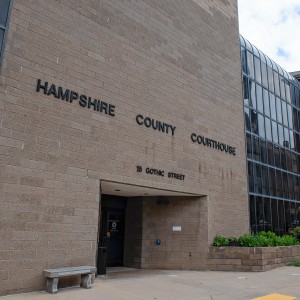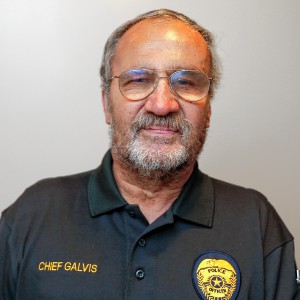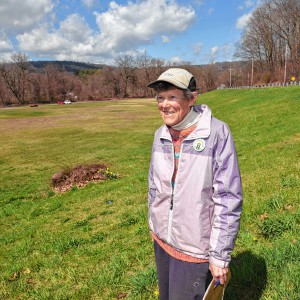Speaking of Nature: The cusp of adulthood
| Published: 09-17-2018 6:00 AM |
September is that time of year when students in the United States go back to school. It is a predictable percussion point in the rhythm of American life, and it sets the tempo of many people’s lives for the following 10 months. As a teacher who handles adolescents, it is a time when I get to meet freshmen for the first time and I make the acquaintance of students that I may know for the next four years.
Those teenage years aren’t easy ones. Youth are shifting from the juvenile to adult forms in a long, drawn out process that can be confusing, embarrassing and frustrating as they try to make their way through the world while their brains and bodies mature. What makes perfect sense to an adult is almost incomprehensible to a teenager, and this is further exacerbated by the ever-changing landscape of rules, norms and expectations to which teens have to adapt.
It turns out that this phenomenon is not restricted to the human world. Every year, just as the summer seems to be ending, there is a wave of juvenile birds that passes through the landscape. The young-of-the-year birds must start the process of breaking away from their parents and fending for themselves. Some youngsters are abandoned and some are driven off, but a very lucky few are brought into a larger clan where personal relationships will last. It all depends on the “culture” of a particular species.
I got to thinking about this topic a couple of weekends ago when I was home trying to decide upon a topic for my next column. There is a slight delay between the time I submit a piece and the day it is published, so I often have a breakthrough only after I have already sent something in. Such was the case this week.
Anyway, I was sitting at my writing desk at the kitchen window and I suddenly noticed that the birds I was looking at were quite a motley crew. The first bird to capture my attention was a juvenile rose-breasted grosbeak that was clearly on his own, trying to figure out what was going on. He seemed to be hanging around with an assortment of other juvenile birds of various species, and from what I can tell, he was just following them around and exploring. The fact that he stumbled into a little area where food was available might have been a very nice surprise for him.
I snapped a series of photos that I will probably share with you next September. The reason for that is the fact that the other juvenile birds the grosbeak was hanging around with were far more compelling in an awkward, teenaged, hot mess sort of situation. In particular, there was a young cardinal and a young blue jay that simply had to be documented.
The cardinal was going through his change from fledgling to adult. As fledglings, northern cardinals are a dull brown and their beaks are a dull gray. Adult female cardinals are a vibrant cinnamon brown and their beaks are a beautiful shade of orange-red that I sometimes think makes them more attractive than the adult males. However, an adult male cardinal with his bright red feathers, black mask and bright red beak is certainly stunning to behold.
The young cardinal on my porch railing was none of these things. His juvenile feathers were being replaced with red feathers one at a time, and his beak was slowly switching from gray to red. When I saw this bird, he could best be described as a “hot mess.” His disheveled appearance, his spotty coloration and his beak (which looked like liverwurst that had gone bad) all combined to give this poor fellow a real “ugly duckling” look.
Article continues after...
Yesterday's Most Read Articles
 Greenfield man arrested in New York on murder charge
Greenfield man arrested in New York on murder charge
 Man allegedly steals $100K worth of items from Northampton, South Deerfield businesses
Man allegedly steals $100K worth of items from Northampton, South Deerfield businesses
 Greenfield Police Logs: April 9 to April 17, 2024
Greenfield Police Logs: April 9 to April 17, 2024
 Former Leyden police chief Daniel Galvis charged with larceny
Former Leyden police chief Daniel Galvis charged with larceny
 Shea Theater mural artist chosen out of 354 applicants
Shea Theater mural artist chosen out of 354 applicants
 Millers Meadow idea would ‘completely transform’ Colrain Street lot in Greenfield
Millers Meadow idea would ‘completely transform’ Colrain Street lot in Greenfield
The other bird to grab my attention was a particular blue jay that came across as affable, enthusiastic and altogether goofy. Because blue jays do not exhibit any external features to identify the sexes, I have no idea if this bird was male or female. It was a member of a group of young blue jays at my feeders that day, all of which were in the middle of a molt. One bird had lost so many feathers on its head that I thought it must be quite cold, but it was too quick to photograph.
The jay that I did capture on film was not nearly as disheveled as its fellow tweener, but there were enough feathers out of place to give the bird a real “ragamuffin” appearance. What really struck me was the look on this bird’s face when it pointed its beak directly at me. The bird almost certainly wasn’t looking at me, but there is the appearance of the same vacant expression that I often see on the faces of my students. “Do you have your homework finished” I might ask. “Whah?” is the all-too-common response. A parent of teenagers may see this expression more often than they care to.
The young cardinal will have to learn to fend for himself and may be aggressively chased off by his parents. The young blue jay will have more options. Sometimes young jays will linger in the company of their parents to form cooperative groups that get through the winter, or they might go off and join another group somewhere outside their parents’ territory. Either way, these birds will pass through their awkward phase and be ready for adult life in the coming spring; accomplishing in mere months what took each of us years.
Bill Danielson has been a professional writer and nature photographer for 21 years. He has worked for the National Park Service, the U.S. Forest Service and Massachusetts State Parks, and currently teaches high school biology and physics. Visit www.speakingofnature.com for more information, or go to Speaking of Nature on Facebook.
]]>

 Speaking of Nature: Indulging in eye candy: Finally, after such a long wait, it’s beginning to look like spring is here
Speaking of Nature: Indulging in eye candy: Finally, after such a long wait, it’s beginning to look like spring is here Celebrating ‘Seasonings’: New book by veteran preacher and poet, Allen ‘Mick’ Comstock
Celebrating ‘Seasonings’: New book by veteran preacher and poet, Allen ‘Mick’ Comstock Faith Matters: How to still the muddy waters of overthinking: Clarity, peace and God can be found in the quiet spaces
Faith Matters: How to still the muddy waters of overthinking: Clarity, peace and God can be found in the quiet spaces A time for every purpose under heaven: Free sing-a-long Pete Seeger Fest returns to Ashfield, April 6
A time for every purpose under heaven: Free sing-a-long Pete Seeger Fest returns to Ashfield, April 6
